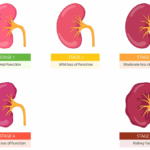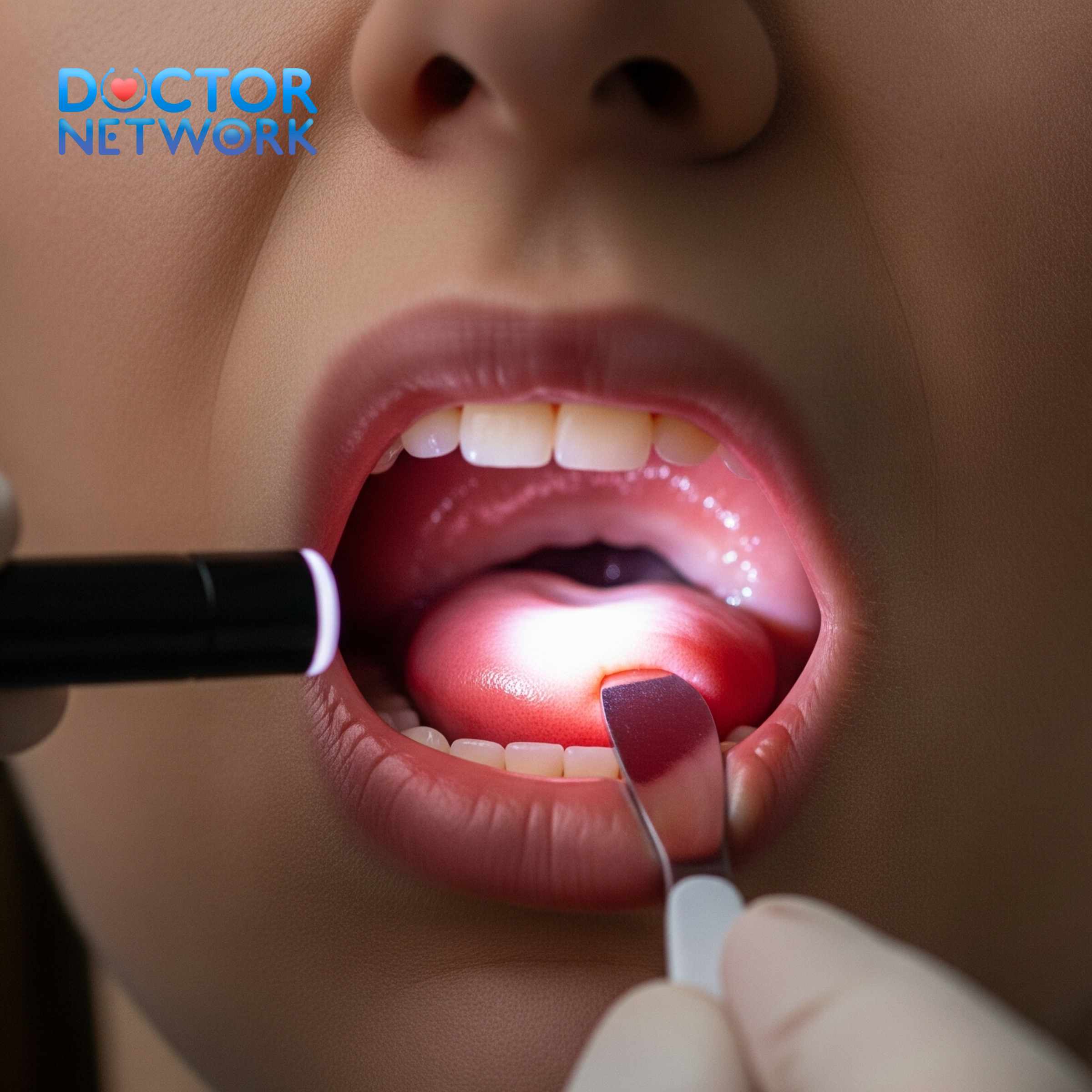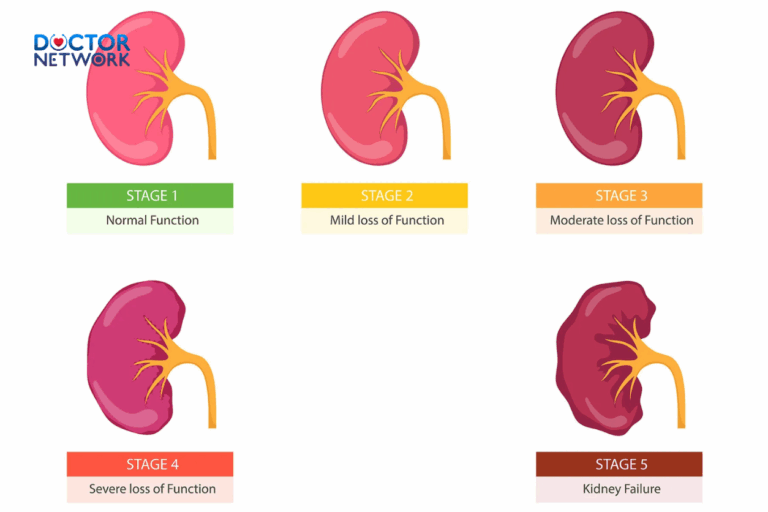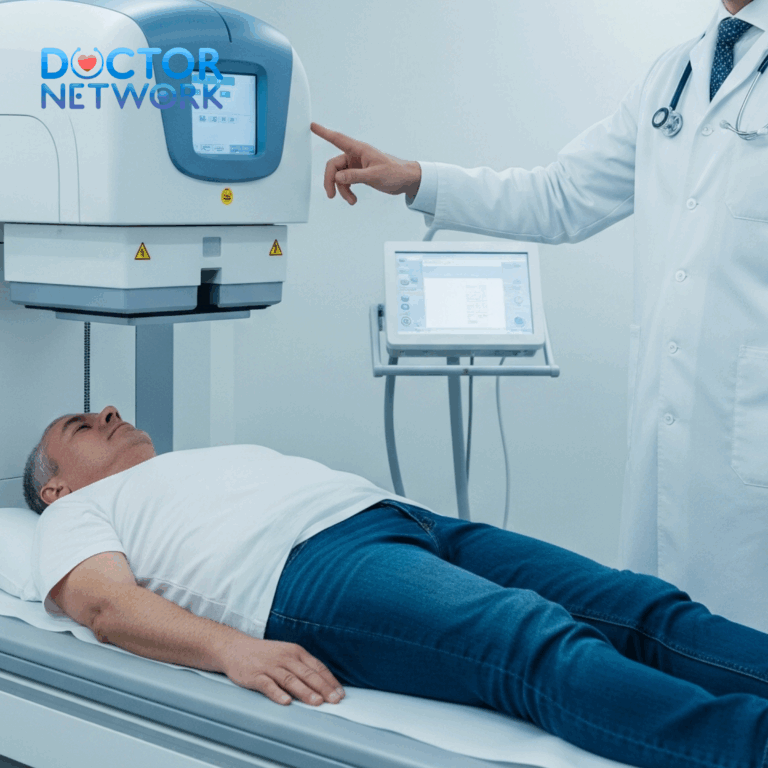The liver’s remarkable capacity to regenerate and heal from alcohol damage offers hope to millions suffering from alcohol-related liver disease, which affects over 4.5 million Americans according to CDC statistics and causes approximately 25,000 deaths annually. Unlike most organs that form scar tissue when damaged, the liver possesses unique regenerative properties that allow it to rebuild healthy tissue, restore normal function, and recover from significant alcohol-induced injury when given the opportunity through sustained abstinence.
Signs Your Liver Is Healing from Alcohol – This comprehensive guide explores the definitive physical and biochemical signs indicating liver healing after stopping or reducing alcohol consumption. We’ll examine the biological mechanisms behind each healing sign, provide realistic timelines for recovery, discuss factors that influence regeneration speed, and offer evidence-based strategies to support optimal liver restoration. Understanding these healing indicators empowers individuals on their sobriety journey by providing tangible evidence of their body’s remarkable recovery process and motivation to maintain long-term abstinence.

Signs Your Liver Is Healing from Alcohol
Understanding Alcohol’s Devastating Impact on the Liver
The liver serves as your body’s primary detoxification center, processing over 500 essential functions including filtering toxins, producing bile for digestion, storing nutrients, regulating blood sugar, and manufacturing proteins crucial for blood clotting and immune function. When alcohol enters your system, the liver prioritizes metabolizing ethanol through a two-step process that converts alcohol first to acetaldehyde (a toxic compound) and then to acetate, which the body can safely eliminate.
This metabolic process creates significant cellular stress because acetaldehyde damages liver cells directly, triggers inflammatory responses, and depletes essential nutrients needed for proper liver function. The liver can only process approximately one standard drink per hour, and consuming alcohol faster than this rate overwhelms the organ’s capacity, leading to toxic accumulation and progressive cellular damage.
Alcohol-related liver disease progresses through three distinct stages, each representing increasing severity of hepatic injury. Fatty liver disease (hepatic steatosis) develops first as liver cells accumulate fat deposits instead of processing nutrients normally. This stage typically remains asymptomatic but represents the foundation for more serious damage if drinking continues.
Alcoholic hepatitis follows as the second stage, characterized by significant liver inflammation, cellular swelling, and active tissue damage. Patients may experience fatigue, nausea, abdominal pain, and jaundice during this phase. The encouraging news is that much of the damage from alcoholic hepatitis can be reversed with complete abstinence and appropriate medical care.
Cirrhosis represents the final and most severe stage, involving permanent scarring (fibrosis) and cellular death throughout the liver. While cirrhotic tissue cannot regenerate, the remaining healthy liver tissue can compensate for lost function when alcohol consumption stops, preventing further deterioration and allowing improved quality of life.
| Stage | Characteristics | Symptoms | Reversibility |
|---|---|---|---|
| Fatty Liver | Fat accumulation in hepatocytes | Usually asymptomatic | Fully reversible |
| Alcoholic Hepatitis | Inflammation and cellular swelling | Fatigue, nausea, jaundice | Largely reversible |
| Cirrhosis | Permanent scarring and fibrosis | Ascites, bleeding, confusion | Irreversible but compensatable |
The Liver’s Healing Journey: Why Complete Abstinence Is Essential
The liver’s inherent regenerative capacity sets it apart from virtually every other organ in the human body, possessing the remarkable ability to grow new hepatocytes (liver cells) and restore functional tissue even after significant damage. This regenerative process can restore up to 75% of liver mass when healthy conditions are maintained, making liver recovery possible even in cases of substantial alcohol-induced injury.
Complete abstinence from alcohol represents the absolute prerequisite for liver healing, as continued drinking perpetuates cellular damage faster than regeneration can occur. The biological mechanism behind this requirement involves redirecting cellular energy from alcohol metabolism toward tissue repair, protein synthesis, and restoration of normal liver architecture. Even moderate drinking during attempted recovery significantly impairs regenerative processes and prevents optimal healing.
The healing timeline varies considerably based on individual factors, but the liver begins showing signs of recovery within days of stopping alcohol consumption. Inflammation starts subsiding immediately, fat deposits begin mobilizing within weeks, and enzyme levels typically normalize within months of sustained sobriety.
The Signs Your Liver Is Healing: A Comprehensive Analysis
Recognizing liver healing signs provides crucial motivation and validation for individuals committed to recovery, offering tangible evidence that their sacrifice and commitment are producing measurable health improvements. These signs appear gradually and build upon each other as liver function progressively improves.
Sign 1: Dramatically Increased Energy Levels
Your energy levels will noticeably improve as your liver regains its central role in energy metabolism, glucose regulation, and glycogen storage, marking one of the earliest and most motivating signs of hepatic recovery. The liver normally stores glucose as glycogen and releases it as needed to maintain stable blood sugar levels, but alcohol metabolism disrupts this process by consuming cellular energy and interfering with normal carbohydrate processing.
During active drinking, your liver diverts enormous amounts of energy toward processing alcohol rather than maintaining optimal metabolism, leading to chronic fatigue, mental sluggishness, and physical exhaustion that many people accept as normal. As liver function improves, you’ll experience a gradual shift from persistent fatigue toward feeling more productive, motivated, and mentally alert throughout the day.
The timeline for energy improvement typically begins within 2-4 weeks of abstinence and continues building for several months as liver function normalizes. Many people experience initial “sobriety fatigue” during the first week as their body adjusts to functioning without alcohol, but this temporary decrease in energy quickly gives way to sustained improvements that often exceed pre-drinking energy levels.
Sign 2: Healthier Skin and Eye Appearance with Reduced Jaundice
Your skin and eyes will appear noticeably healthier as your liver regains its ability to process bilirubin, the yellow pigment produced when red blood cells break down naturally in your body. A properly functioning liver filters bilirubin from the bloodstream and processes it for elimination, but alcohol-damaged livers cannot handle this load efficiently, causing bilirubin accumulation that creates the characteristic yellow tinting called jaundice.
The fading of jaundice represents one of the most visible signs of liver healing, as yellow discoloration in the eyes (scleral icterus) and skin gradually disappears as bilirubin processing normalizes. Beyond jaundice resolution, you’ll notice reduced skin redness and irritation as systemic inflammation subsides, leading to clearer, healthier-looking skin with improved texture and reduced puffiness.
Jaundice often resolves within 2-8 weeks of sustained abstinence, while general skin improvements can become noticeable within days as inflammation decreases and circulation improves. The speed of improvement depends on the severity of initial liver damage and individual healing capacity.
Sign 3: Significantly Improved Appetite and Digestion
Your appetite and digestive function will normalize as your liver regains its crucial role in bile production and nutrient processing, allowing your body to properly digest fats and absorb essential vitamins and minerals. The liver produces approximately 1 liter of bile daily, which emulsifies fats and enables proper digestion, but alcohol impairs bile production and alters its composition, leading to digestive difficulties and malnutrition.
You’ll notice the return of regular hunger signals as your liver begins processing absorbed nutrients efficiently again, rather than struggling to manage alcohol-induced metabolic disruption. Digestive symptoms like bloating, gas, abdominal discomfort after eating, and irregular bowel movements typically improve as bile production normalizes and intestinal inflammation subsides.
These digestive improvements often become noticeable within 3-6 weeks of abstinence, with continued enhancement over several months as liver function fully normalizes. Better nutrient absorption leads to improved overall health and supports the liver’s regenerative processes.
Sign 4: Reduced Abdominal Pain and Swelling
Abdominal pain and swelling will diminish as liver inflammation subsides and normal organ size is restored, providing relief from one of the most uncomfortable symptoms of alcohol-related liver disease. Pain typically occurs in the right upper abdomen beneath the rib cage where the liver is located, resulting from organ swelling that stretches the liver’s capsule and creates pressure on surrounding structures.
Advanced liver disease can cause fluid accumulation in the abdomen (ascites), creating significant swelling and discomfort that improves as liver function recovers and fluid balance normalizes. You’ll also experience reduced general body aches and joint stiffness as systemic inflammation decreases throughout your body.
The reduction in liver inflammation begins within days of stopping alcohol consumption, with noticeable decreases in pain and swelling following as the inflammatory response subsides. Complete resolution may take several weeks to months depending on the initial severity of inflammation and individual healing factors.
Sign 5: Clearer Thinking and Enhanced Mental Sharpness
Mental clarity will improve dramatically as your liver regains its ability to filter toxins like ammonia and properly process hormones and neurotransmitters that affect brain function. The liver-brain connection plays a crucial role in cognitive function, as liver disease allows toxic substances to accumulate in the bloodstream and interfere with normal neurological processes.
When liver function is impaired, toxic compounds like ammonia can reach the brain and cause symptoms ranging from mild confusion and “brain fog” to severe cognitive impairment known as hepatic encephalopathy. As liver function improves, you’ll experience less confusion, improved memory and concentration, better ability to follow conversations, and enhanced morning cognition.
This gradual improvement in mental clarity typically becomes noticeable around 3-8 weeks into recovery and continues for several months as toxin filtration normalizes and brain function optimizes. Many people report feeling mentally sharper than they have in years as their liver healing progresses.
Sign 6: Stabilized Weight and Improved Metabolism
Your weight will stabilize naturally as your liver regains its central role in processing nutrients, storing energy, and regulating metabolism, often without requiring extreme dietary restrictions or excessive exercise. The liver plays crucial roles in converting nutrients into usable energy, storing vitamins and minerals, and regulating fat metabolism, all of which become disrupted during chronic alcohol consumption.
As liver function normalizes, your body begins using nutrients more effectively, properly storing energy as glycogen rather than fat, and maintaining stable blood sugar levels that reduce cravings and overeating. Many people experience gradual weight normalization as their metabolism improves and their body’s natural hunger and satiety signals return to normal function.
Weight stabilization occurs as liver metabolism improves, though the specific timeline varies based on individual factors including initial body composition, nutritional status, and activity level. Most people notice improved body composition and more stable weight within several months of sustained recovery.
Sign 7: Enhanced Immune Function and Natural Defenses
Your immune system will strengthen significantly as your liver regains its crucial role in filtering bacteria, producing immune proteins, and manufacturing clotting factors essential for proper wound healing and infection resistance. The liver produces many components of the immune system including complement proteins, acute-phase reactants, and albumin, all of which become depleted during chronic alcohol consumption.
You’ll notice reduced frequency of minor illnesses like colds and infections as your immune system strengthens and your liver’s filtering capacity improves. Wound healing accelerates as protein synthesis normalizes and clotting factor production increases. Some people with autoimmune conditions may experience symptom improvement as liver-related inflammation decreases.
These immune improvements typically become apparent 2-3 months into sustained sobriety as liver protein synthesis normalizes and immune function strengthens. The timeline may vary based on individual immune status and concurrent health conditions.
Sign 8: Normalized Liver Enzyme Levels (Objective Laboratory Evidence)
Laboratory blood tests will show dramatically improved liver enzyme levels, providing objective medical evidence of healing that your healthcare provider can monitor and document throughout your recovery journey. The key liver enzymes include ALT (alanine aminotransferase), AST (aspartate aminotransferase), and GGT (gamma-glutamyl transferase), which leak into the bloodstream when liver cells are damaged or destroyed.
Elevated enzyme levels indicate ongoing liver damage, while decreasing levels demonstrate cellular healing and reduced inflammation. GGT is particularly sensitive to alcohol-related liver damage and often serves as an early indicator of improvement. Bilirubin levels also normalize as the liver regains its ability to process this yellow pigment effectively.
Liver enzymes typically begin decreasing within 2-8 weeks of abstinence and often approach normal ranges within 2-6 months of sustained sobriety. Regular monitoring allows healthcare providers to track healing progress objectively and adjust treatment plans accordingly.
Sign 9: Decreased Alcohol Sensitivity and Tolerance
Your body will become less tolerant of alcohol as your liver regains normal function and is no longer adapted to processing large quantities of ethanol regularly. During chronic drinking, the liver increases production of alcohol-metabolizing enzymes and develops tolerance that allows processing larger amounts without immediate impairment.
As liver function normalizes during recovery, this adaptation reverses and alcohol tolerance decreases significantly. This change serves as both a sign of healing and a protective mechanism, as reduced tolerance makes it more difficult to return to previous drinking patterns without immediate negative consequences.
This decreased tolerance occurs as liver enzyme production normalizes and cellular adaptation to chronic alcohol exposure reverses. The timeline varies based on individual factors and the duration of previous alcohol consumption.
| Healing Sign | Biological Mechanism | Typical Timeline | Key Indicators |
|---|---|---|---|
| Increased Energy | Improved glucose metabolism | 2-4 weeks | Less fatigue, better motivation |
| Healthier Skin/Eyes | Normal bilirubin processing | 2-8 weeks | Reduced jaundice, clearer skin |
| Better Digestion | Restored bile production | 3-6 weeks | Normal appetite, less bloating |
| Reduced Pain | Decreased inflammation | Days to weeks | Less abdominal tenderness |
| Mental Clarity | Improved toxin filtration | 3-8 weeks | Better concentration, memory |
| Normal Enzymes | Reduced cellular damage | 2-8 weeks | Laboratory improvement |
The Healing Timeline: What to Expect During Recovery
The liver healing timeline varies significantly based on individual health status, severity of initial damage, duration of alcohol consumption, age, nutritional status, and genetic factors that influence regenerative capacity. Understanding typical progression phases helps set realistic expectations and maintain motivation during the recovery process.
Early Phase Recovery (Days to Several Weeks) begins immediately with reduced inflammation as the liver stops processing alcohol and redirects energy toward cellular repair. Fat deposits within liver cells start mobilizing, blood sugar levels begin stabilizing, and enzyme levels show initial improvement. Early signs include reduced skin inflammation, initial energy improvements, and decreased abdominal tenderness.
Mid-Phase Recovery (Several Weeks to Months) involves significant hepatocyte regeneration and functional improvement as new liver cells replace damaged tissue. Enzyme levels normalize substantially, inflammation and pain decrease markedly, and energy levels, digestion, sleep quality, and mental clarity show dramatic improvement. Fatty liver disease often becomes fully reversible during this phase.
Later Phase Recovery (Several Months to Years) consolidates healing gains and optimizes liver function including bile quality, glycogen storage capacity, and detoxification efficiency. Some residual fibrosis may continue improving if cirrhosis has not developed, and immune function reaches optimal levels.
For individuals with cirrhosis, healing focuses on optimizing compensated function of remaining healthy tissue rather than reversing permanent scarring. However, even cirrhotic patients can experience significant symptom improvement and quality of life enhancement with sustained abstinence.
Critical Factors Influencing Liver Recovery Speed and Success
Beyond complete abstinence from alcohol, several key factors significantly influence the speed and extent of liver healing, making recovery a highly individualized process that varies considerably between patients with similar initial damage levels.
Age and Regenerative Capacity play crucial roles in healing speed, as younger individuals generally recover faster due to enhanced cellular regeneration, better overall health status, and fewer concurrent medical conditions that complicate recovery. However, significant improvement is possible at any age with sustained commitment to sobriety and healthy lifestyle changes.
Nutritional Status and Dietary Quality critically impact liver regeneration because the organ requires adequate protein, B vitamins (especially thiamine, folate, and B12), zinc, antioxidants, and essential fatty acids for optimal cellular repair and function. Chronic alcohol consumption typically creates severe nutritional deficiencies that must be corrected to support healing.
Protein deficiency is particularly problematic because the liver requires amino acids to synthesize new cells, produce essential proteins like albumin and clotting factors, and maintain proper metabolic function. B vitamin deficiencies are common in alcohol use disorder and impair cellular energy production and DNA synthesis needed for regeneration.
Metabolic Health and Concurrent Conditions significantly influence recovery outcomes, as conditions like diabetes, obesity, metabolic syndrome, and insulin resistance create additional stress on the liver and may slow healing processes. Managing these conditions optimally supports liver recovery and prevents secondary complications.
Genetic Factors influence both alcohol processing capacity and regenerative ability, explaining why some individuals develop severe liver disease with relatively modest alcohol consumption while others tolerate higher intake levels. Genetic variations in alcohol-metabolizing enzymes, antioxidant systems, and inflammatory responses all impact recovery potential.
Concurrent Liver Conditions such as viral hepatitis (B or C), autoimmune liver disease, or non-alcoholic fatty liver disease (NAFLD) complicate recovery by creating additional sources of liver inflammation and damage that must be managed alongside alcohol-related injury.
Supporting Your Liver’s Healing Process Through Lifestyle Optimization
Comprehensive lifestyle interventions significantly accelerate liver healing and optimize long-term function by providing essential nutrients, reducing oxidative stress, improving circulation, and minimizing exposure to additional toxins that could impair recovery.
Nutrient-Dense Dietary Choices form the foundation of liver healing by providing building blocks for cellular repair and regeneration. Focus on leafy green vegetables rich in folate and antioxidants, cruciferous vegetables like broccoli and Brussels sprouts that support detoxification pathways, healthy fats from sources like olive oil and avocados, and antioxidant-rich fruits including berries and citrus.
Adequate protein intake is essential for liver regeneration, with recommendations ranging from 1.2-1.5 grams per kilogram of body weight daily from high-quality sources like lean meats, fish, eggs, legumes, and dairy products. Complex carbohydrates provide steady energy while supporting glycogen storage as liver function improves.
Optimal Hydration supports liver function by facilitating toxin elimination, maintaining proper blood volume for hepatic circulation, and supporting cellular processes. Aim for 8-10 glasses or 2-3 liters of water daily, adjusting based on activity level, climate, and individual needs.
Regular Physical Activity enhances liver healing through multiple mechanisms including improved circulation that delivers nutrients and oxygen to liver cells, reduced fatty deposits through enhanced metabolism, improved insulin sensitivity that reduces metabolic stress, and enhanced lymphatic drainage that supports toxin elimination.
Moderate exercise like brisk walking, swimming, cycling, or yoga provides optimal benefits without excessive stress. Even light activity is beneficial, and exercise tolerance typically improves as liver function and energy levels normalize.
Stress Management and Sleep Optimization significantly impact liver healing because chronic stress elevates cortisol levels that impair regeneration, disrupts sleep patterns needed for cellular repair, and may trigger cravings that threaten sobriety. Effective stress management techniques include mindfulness meditation, deep breathing exercises, adequate sleep (7-9 hours nightly), and maintaining supportive social connections.
Avoiding Additional Hepatotoxic Substances prevents further liver damage during recovery. Beyond alcohol, be cautious with over-the-counter medications like acetaminophen (Tylenol) and NSAIDs (ibuprofen, naproxen) that can stress the liver, especially in higher doses. Smoking cessation is important as tobacco compounds require liver detoxification and impair circulation.
Targeted Nutritional Supplements may support liver healing when used appropriately under medical supervision. Potentially beneficial supplements include:
- Milk Thistle (Silymarin): Antioxidant and anti-inflammatory properties
- Turmeric (Curcumin): Reduces inflammation and supports detoxification
- Vitamin E: Antioxidant protection against cellular damage
- Zinc: Essential for protein synthesis and immune function
- B-Complex Vitamins: Support cellular energy production and regeneration
- Phosphatidylcholine: Supports cellular membrane repair
Important Safety Note: Always consult healthcare providers before starting supplements, as some may interact with medications or cause harm in certain liver conditions. Self-medication can be dangerous during liver recovery.
Regular Medical Monitoring remains essential throughout recovery to track progress objectively, identify potential complications early, and adjust treatment plans as needed. Regular blood tests, imaging studies when indicated, and clinical evaluations provide crucial information about healing progress and overall health status.
Objective Measures Beyond Standard Liver Enzymes
While liver enzymes (ALT, AST, GGT) and bilirubin levels provide the most commonly monitored indicators of liver healing, additional objective measures offer comprehensive assessment of hepatic recovery and functional improvement.
Advanced Imaging Techniques can demonstrate structural improvements in liver tissue over time. Ultrasound examination may show reduced liver size as inflammation subsides and can detect changes in tissue density. FibroScan technology measures liver stiffness non-invasively, providing information about fibrosis levels and changes over time during recovery.
Functional Blood Tests assess the liver’s synthetic and metabolic capabilities beyond enzyme levels. Albumin levels indicate protein production capacity, while PT/INR (prothrombin time/international normalized ratio) measures clotting factor synthesis. Improvement in these parameters demonstrates restored liver function rather than just reduced cellular damage.
Note: While these advanced measures are used clinically, detailed protocols and interpretation require specialized medical expertise and may not be routinely available in all healthcare settings.
When to Seek Immediate Professional Medical Guidance
Certain warning signs during liver healing require immediate medical evaluation, as they may indicate serious complications or inadequate recovery progress that needs urgent intervention.
Severe Symptoms Requiring Emergency Care include:
- Progressive or worsening jaundice despite abstinence
- Significant abdominal swelling or ascites development
- Unusual bleeding or bruising indicating clotting problems
- Extreme fatigue or weakness that interferes with daily activities
- Mental confusion, disorientation, or personality changes
- Persistent vomiting or inability to maintain nutrition
- Severe abdominal pain that doesn’t improve with rest
Ongoing Medical Conditions require specialized management during liver recovery. Individuals with previous diagnoses of cirrhosis, alcoholic hepatitis, or significant liver fibrosis need regular monitoring even during successful recovery to detect potential complications and optimize treatment.
Concurrent Health Conditions like diabetes, heart disease, or other chronic illnesses require coordinated care to ensure that liver healing doesn’t interfere with management of other conditions and vice versa.
Medication Adjustments may be necessary as liver function improves, since enhanced hepatic metabolism can change how medications are processed and cleared from the body. Work closely with healthcare providers to monitor medication effectiveness and adjust dosages appropriately.
Persistent Laboratory Abnormalities warrant further investigation if liver enzymes remain significantly elevated despite several months of abstinence, as this may indicate concurrent liver conditions or incomplete recovery requiring additional interventions.
The Profound Psychological Impact of Witnessing Physical Healing
Observing tangible signs of liver healing creates powerful psychological benefits that significantly enhance motivation for maintaining long-term sobriety and provide emotional validation for the challenges of recovery.
Motivation and Renewed Hope develop as individuals witness their body’s remarkable ability to heal and recover from alcohol-induced damage. Seeing improvements in energy levels, skin appearance, mental clarity, or laboratory values provides concrete evidence that sobriety produces measurable health benefits, making the effort feel worthwhile and sustainable.
Emotional Significance and Validation emerge from recognizing that the body is actively repairing itself when given the opportunity. This biological validation of recovery efforts can be profoundly meaningful for individuals who may have doubted their ability to heal or questioned whether the sacrifices of sobriety would produce real benefits.
The connection between physical healing and emotional well-being creates positive reinforcement cycles that support long-term recovery success. Each improvement in liver function serves as a reminder of the body’s resilience and the individual’s commitment to health, strengthening resolve during challenging moments in the recovery journey.
Addressing Potential Plateaus and Slowdowns in Healing
Liver healing progression is not always linear, and individuals may experience periods where improvement seems to slow down or plateau, which can be discouraging but is often a normal part of the recovery process.
Understanding Healing Variability helps maintain realistic expectations about recovery timelines. Some individuals experience rapid initial improvement followed by slower progress, while others see gradual steady improvement over longer periods. Factors like initial damage severity, age, nutritional status, and concurrent health conditions all influence healing patterns.
Plateau Periods may occur when the liver has addressed acute inflammation and damage but requires additional time for deeper cellular regeneration and functional optimization. These periods don’t necessarily indicate healing failure but may represent consolidation phases where gains are maintained while further recovery continues at a slower pace.
Maintaining Perspective during slower healing periods requires focus on overall progress rather than week-to-week changes. Comparing current status to pre-recovery baseline rather than expecting continuous rapid improvement helps maintain motivation and prevents discouragement.
Beyond Healing: Establishing Lifelong Liver Wellness
Successful liver recovery extends beyond reversing alcohol damage to encompass comprehensive health transformation that supports optimal hepatic function throughout life and prevents future liver problems from any cause.
Comprehensive Health Approach frames recovery as an opportunity for complete lifestyle transformation rather than simply abstaining from alcohol. This broader perspective emphasizes that the liver continues performing hundreds of essential functions daily, requiring ongoing support through healthy lifestyle choices.
Maintaining Optimal Liver Function throughout life involves sustaining the healthy habits developed during recovery including nutrient-dense nutrition, regular physical activity, adequate hydration, stress management, and avoiding hepatotoxic substances. These practices support the liver’s ongoing roles in processing medications, regulating blood sugar, filtering environmental toxins, and maintaining metabolic health.
Preventing Non-Alcoholic Liver Conditions becomes increasingly important as individuals age, particularly preventing non-alcoholic fatty liver disease (NAFLD) that affects millions of people regardless of alcohol consumption. The healthy lifestyle choices that support alcohol recovery also prevent NAFLD and other metabolic liver conditions.
Long-Term Strategies for Liver Wellness include:
- Sustainable Nutrition: Maintaining anti-inflammatory, nutrient-dense dietary patterns
- Regular Exercise: Continuing physical activity that supports circulation and metabolism
- Environmental Awareness: Minimizing exposure to toxic chemicals and pollutants
- Medication Mindfulness: Working with healthcare providers to minimize unnecessary medications and monitor liver effects of required treatments
- Ongoing Health Monitoring: Regular check-ups and laboratory testing to detect problems early
Regular Health Maintenance remains important throughout life to monitor liver function, detect potential problems early, and maintain optimal health status. This includes routine blood work, appropriate screening tests, and preventive care that supports overall well-being.
| Recovery Phase | Timeline | Key Focus Areas | Expected Improvements |
|---|---|---|---|
| Early Recovery | Days-Weeks | Inflammation reduction, basic function | Energy, skin, digestion |
| Active Healing | Weeks-Months | Cellular regeneration, enzyme normalization | Mental clarity, lab values |
| Consolidation | Months-Years | Function optimization, lifestyle integration | Overall wellness, prevention |
Conclusion: Embracing the Liver’s Remarkable Healing Journey
The liver’s extraordinary capacity to regenerate and heal from even severe alcohol-induced damage represents one of medicine’s most hopeful examples of the human body’s resilience and recovery potential. When provided with the essential requirement of complete abstinence from alcohol, supported by optimal nutrition, and given adequate time, the liver can restore remarkable function and dramatically improve quality of life for individuals committed to recovery.
Recognizing the signs of liver healing provides powerful motivation and validation for individuals navigating the challenging but rewarding journey of sobriety. From increased energy levels and improved mental clarity to normalized laboratory values and enhanced immune function, these healing indicators offer tangible evidence that the sacrifice and commitment of recovery produce measurable, life-changing health benefits.
The path to liver healing extends beyond simply stopping alcohol consumption to encompass comprehensive lifestyle transformation that supports optimal hepatic function throughout life. By maintaining the healthy habits developed during recovery, individuals not only preserve their hard-won gains but also prevent future liver problems and optimize overall health and longevity.
Hope and empowerment emerge from understanding that liver healing is not only possible but probable with sustained commitment to sobriety and healthy living. Each sign of improvement represents a victory over alcohol-induced damage and a step toward optimal health, creating positive momentum that supports long-term recovery success and comprehensive well-being.
The journey of liver healing ultimately becomes a journey of complete health transformation, offering individuals the opportunity to not only reverse past damage but to achieve better health than they may have experienced in years. This remarkable recovery potential serves as a powerful reminder of the body’s incredible ability to heal when given the chance and the individual’s capacity to reclaim their health and life through committed action and sustained healthy choices.
Here are 5 common questions people often ask about signs that the liver is healing from alcohol, along with expert answers based on recent research and medical insights:
1. Can the liver heal itself after alcohol damage?
Yes, the liver has a remarkable ability to regenerate and heal itself, especially if alcohol consumption is stopped before severe damage like cirrhosis occurs. The liver can reverse fatty liver disease and inflammation caused by alcoholic hepatitis, but scarring (cirrhosis) is generally permanent and may require a transplant to restore full function. Even with some scarring, the liver can still improve its function by healing inflammation.
2. How long does it take for the liver to heal after quitting alcohol?
Healing begins within days after stopping alcohol use. Fatty liver disease can almost completely resolve within about three weeks, and significant liver recovery often occurs within a month. Liver enzyme levels, which indicate liver stress, can start to normalize within 1 to 2 weeks and continue improving over several weeks to months, depending on the damage severity and individual health.
3. What are the early signs that my liver is healing?
Early signs include:
Increased energy levels due to improved liver efficiency in processing nutrients and toxins
Decreased liver inflammation reflected by normalized liver enzymes (AST, ALT)
Improved mental clarity and reduced brain fog as toxins are better filtered
Better digestion and reduced bloating as bile production improves
Healthier skin and eyes, with reduced jaundice symptoms (less yellowing)
Reduced abdominal pain or swelling from decreased inflammation
Improved appetite indicating better nutrient metabolism.
4. How can I tell from blood tests if my liver is healing?
Blood tests showing a reduction in liver enzymes such as AST and ALT are key indicators of liver healing. Elevated enzyme levels indicate liver stress or damage, and their gradual normalization over weeks to months after stopping alcohol signals reduced inflammation and improved liver function.
5. Does liver healing mean I can safely drink alcohol again?
No, continued alcohol consumption will reintroduce toxins and stress the liver, potentially reversing healing progress and leading to further damage. To allow the liver to heal fully and maintain health, abstaining from alcohol is essential. Even if some damage is irreversible, stopping drinking slows progression and improves liver function.
Here are signs your liver might be healing, along with supporting evidence:
Improvement in Symptoms and General Well-being:
Signs: Reduced fatigue and malaise, improved energy levels, decreased abdominal pain or discomfort (especially in the upper right quadrant), resolution of jaundice (yellowing of skin and eyes), diminished ascites (fluid accumulation in the abdomen), improved appetite, and reduced nausea.
Evidence/Study: While specific studies quantifying symptom improvement as a primary endpoint are numerous within broader ALD recovery contexts, this is a well-established clinical observation. Reviews often describe this.
Source: Seitz, H. K., Bataller, R., Cortez-Pinto, H., Gual, A., Lackner, C., Mathurin, P., … & Schuppan, D. “Alcoholic liver disease.”
Journal: Nature Reviews Disease Primers, 2018; 4(1), 16.
Link (Nature): https://www.nature.com/articles/s41572-018-0014-7
Relevance: This comprehensive review discusses the natural history of ALD, including improvement upon abstinence. Symptomatic relief is a key part of clinical recovery described.
Normalization of Liver Function Tests (LFTs):
Signs: Blood tests showing a decrease and eventual normalization of elevated liver enzymes such as:
Alanine Aminotransferase (ALT)
Aspartate Aminotransferase (AST)
Gamma-Glutamyl Transferase (GGT) – often one of the first to improve.
Alkaline Phosphatase (ALP)
Improvement in synthetic function markers:
Bilirubin levels decreasing (if previously elevated).
Albumin levels increasing (if previously low).
Prothrombin Time (PT) / International Normalized Ratio (INR) normalizing (if previously prolonged, indicating impaired clotting factor production).
Evidence/Study:
Source: Moussavian, S. N., Becker, R. C., Piepmeyer, J. L., Mezey, E., & Bozian, R. C. “Serum gamma-glutamyl transpeptidase and chronic alcoholism. Influence of alcohol ingestion and abstinence.”
Journal: Digestive Diseases and Sciences, 1985; 30(3), 211–214.
Link (PubMed): https://pubmed.ncbi.nlm.nih.gov/2857637/
Relevance: This older but foundational study demonstrates the significant fall in GGT levels after alcohol cessation, highlighting its utility as a marker of abstinence and early liver recovery.
Evidence/Study (Broader LFTs):
Source: Crabb, D. W. “Pathogenesis of alcoholic liver disease: newer mechanisms of injury.”
Journal: Keio Journal of Medicine, 1999; 48(4), 184-188.
Link (J-STAGE – Full Text): https://www.jstage.jst.go.jp/article/kjm/48/4/48_4_184/_article
Relevance: While discussing pathogenesis, this article (and many others on ALD) implicitly supports that reversal of injury mechanisms through abstinence leads to LFT normalization. The time course varies; GGT often improves within weeks, ALT/AST may take weeks to months.
Reduction in Liver Fat (Steatosis) and Inflammation:
Signs:
Improvement seen on imaging studies (ultrasound, CT, or MRI) showing less fat accumulation.
If a follow-up liver biopsy is performed (less common purely for monitoring healing unless for severe cases or research), it would show reduced steatosis, inflammation (fewer inflammatory cells), and ballooning degeneration of hepatocytes.
FibroScan (transient elastography) can show a decrease in the CAP score (Controlled Attenuation Parameter), which measures steatosis.
Evidence/Study:
Source: Sookoian, S., & Pirola, C. J. “Review article: the genetic epidemiology of alcoholic liver disease – a 2017 update.”
Journal: Alimentary Pharmacology & Therapeutics, 2017; 46(3), 227-243. (Focus here is on the broader context of ALD)
While this article focuses on genetics, it, like most reviews on ALD, acknowledges that alcoholic steatosis is reversible with abstinence.
More specific on steatosis reversal:
Source: Mathurin, P., Moreno, C., & Samuel, D. “Early liver transplantation for severe alcoholic hepatitis.”
Journal: Journal of Hepatology, 2018; 69(3), 746-747. (This discusses transplantation, but within the context of severe ALD and the potential for improvement).
Finding a direct study titled “Ultrasound changes after abstinence” can be tricky, as it’s often a component of broader studies. However, the principle is well-established:
Clinical observation reference: It’s widely accepted and documented in hepatology textbooks that steatosis is the earliest and most reversible form of alcoholic liver injury. For example, in “Sherlock’s Diseases of the Liver and Biliary System.”
Source (Illustrative for FibroScan): Naveau, S., Gaudé, G., Asnacios, A., Agostini, H., Abella, A., Barri-Ova, N., … & Perlemuter, G. “Diagnostic and prognostic values of noninvasive biomarkers of fibrosis in patients with alcoholic liver disease.”
Journal: Hepatology, 2009; 49(1), 93-101.
Link (PubMed): https://pubmed.ncbi.nlm.nih.gov/19053048/
Relevance: While this focuses on fibrosis biomarkers, FibroScan also measures steatosis (CAP score). Abstinence leading to reduced steatosis would be reflected in CAP score changes, though this study’s primary focus was fibrosis. The principle is that tools measuring steatosis will show improvement.
Improvement or Stabilization of Liver Fibrosis (Scarring):
Signs:
This is more complex. Early-stage fibrosis may improve or even regress to some extent with prolonged abstinence.
Advanced fibrosis (cirrhosis) is generally considered irreversible, but abstinence can halt its progression, prevent further scarring, and reduce the risk of complications. The liver can still function better even with cirrhosis if the ongoing injury (alcohol) is removed.
Non-invasive tests like FibroScan (measuring liver stiffness), or other serum fibrosis markers (e.g., FIB-4, APRI) may show improvement or stabilization.
Evidence/Study:
Source: Povero, D., Eguchi, A., Li, H., Johnson, C. D., & Feldstein, A. E. “The Lipotoxic Loop: Macrophages, Inflammation, and Steatohepatitis.”
Journal: Hepatology, 2013; 57(6), 2481-2487. (This is more mechanistic but relates to processes that, when reversed, could lead to fibrosis improvement).
More directly on fibrosis regression:
Source: Ellis, G., & Mann, D. A. “Clinical and experimental advances in liver fibrosis.”
Journal: Journal of Hepatology, 2012; 56(5), 1177-1185. (Reviewing fibrosis mechanisms and potential for regression)
Source (Specific to ALD and abstinence): Verrill, C., Markham, H., Templeton, A., Carr, N. J., & Sheron, N. “Alcohol-related cirrhosis–early abstinence is a key factor in prognosis: a United Kingdom study.”
Journal: European Journal of Gastroenterology & Hepatology, 2009; 21(1), 75-80.
Link (PubMed): https://pubmed.ncbi.nlm.nih.gov/19092461/
Relevance: While focusing on prognosis in cirrhosis, it underscores the benefit of abstinence in preventing progression. Studies on actual regression of established cirrhosis are limited, but halting progression and improving function is a key sign of “healing” in this context.
Source (Fibrosis regression potential): Trautwein, C., Friedman, S. L., Schuppan, D., & Pinzani, M. “Hepatic fibrosis: Concept to treatment.”
Journal: Journal of Hepatology, 2015; 62(1 Suppl), S15-S24.
Link (Journal of Hepatology): https://www.journal-of-hepatology.eu/article/S0168-8278(15)00182-8/fulltext
Relevance: This review discusses the dynamic nature of fibrosis and the potential for regression if the underlying insult (like alcohol) is removed, especially in earlier stages.
Kiểm Duyệt Nội Dung
More than 10 years of marketing communications experience in the medical and health field.
Successfully deployed marketing communication activities, content development and social networking channels for hospital partners, clinics, doctors and medical professionals across the country.
More than 6 years of experience in organizing and producing leading prestigious medical programs in Vietnam, in collaboration with Ho Chi Minh City Television (HTV). Typical programs include Nhật Ký Blouse Trắng, Bác Sĩ Nói Gì, Alo Bác Sĩ Nghe, Nhật Ký Hạnh Phúc, Vui Khỏe Cùng Con, Bác Sỹ Mẹ, v.v.
Comprehensive cooperation with hundreds of hospitals and clinics, thousands of doctors and medical experts to join hands in building a medical content and service platform on the Doctor Network application.


























